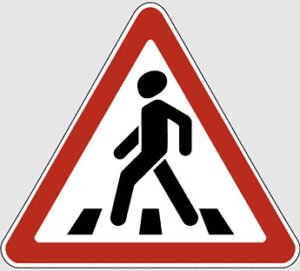Driver Safety – Who is Driving Your Lyft and Uber Rides?
Uber and Lyft have been described as two of the most lucrative and prominent ride hailing companies to exists in the United States over recent years. The ease of booking a ride to your destination with one touch of your Smartphone, coupled with competitive costs that has resulted in a decline of taxi use, has allowed these companies to profit tremendously and their popularity to soar. The issue of public safety has begun to create a nationwide buzz and those asserting the dismay are concerned that the screening process utilized for drivers is less than adequate to say the least. Political leaders suggest that the screening process of the tens of thousands of drivers that are employed by Uber and Lyft, have simply “slipped through the cracks.”
Lyft declares that their screening process usually varies depending upon the individual, but the average processing time is about 10 to 14 days. The screening process consists of a driving record check, criminal history background check, and employment history verification. Lyft has a unique process because they have implemented a “Mentoring” program that allows new drivers to engage in an apprentice-like experience before actually accepting ride appointments. Before participating in the program, about one hour prior to meeting your mentor, your driving record is entered into a system that will automatically let the company whether you are qualified to drive or not. Lyft prides themselves in providing a quick turnaround for the hiring process and some applicants have even been able to accept appointments within two days! Lyft urges applicants to contact them if they have not heard a response in 3 to 4 weeks.
Uber suggests that their employee screening process is surefire due to the use of social security verification. With this information, Uber is able to determine all addresses associated with the social security number, which as a result allows Uber to compare and search criminal records that exists within the past seven years. Uber gains access to the National Sex Offender Registry and databases that flag terrorists. Uber suggests that they are detailed and thorough in their investigation, so much so, that if criminal activity is flagged the record is pulled in person or via the internet.
Understanding Your Insurance Coverage with Lyft And Uber
Have you ever taken a ride with Uber and Lyft? From the booking, to the pick-up, to the drop-off, effortless right? Chances are you probably haven’t thought of getting in an accident and in the event that this did happen, whose insurer would carry the costs? Another key point to mention is that those who are employed with these ride-hailing companies are limited in their coverage as well. As you know personal vehicles are used and any damage suffered to your personal car is attributed to your personal insurance. Further, in the event that you are involved in an accident with another vehicle, liability insurance and not collision exists.
Many states are looking to reform the insurance regulations that are mandated for ride-hailing companies due to the influx in vehicular accidents, one specifically was the death of the six year old San Francisco girl who was hit by an Uber driver on New Year’s Eve of 2013. This accident made headlines because of Uber’s refusal to pay out on their $1 million insurance policy. Their refusal was justified because the driver was not on the way to, from, or transporting a client.
The State of Georgia recently passed House Bill 190, which will place more strict requirements on ride-hailing companies regarding insurance. Lawmakers have great concerns that Uber and Lyft have been able to benefit as a commercial entity, but they have not been held to commercial standards. If you take a close look at the agreement or also noted as “Terms of Agreement,” those utilizing this service are in a way indemnifying Uber and Lyft of all responsibility. House Bill 190, introduced by Rich Golick, will not only allocate protect to drivers and passengers, but it will require that Uber/Lyft register with the Georgia Department of Public Safety. Before the introduction of the new law, Uber/Lyft were not required to cover their drivers under their insurance and dropping coverage would not cause a violation of state law, not it carries a very high, costly penalty. To date, there are about 5,000 Uber drivers who currently serve the state of Georgia.
Uber And Lyft: Liability in Car Sharing Accidents
Real-time ridesharing is a service that provides transportation at a short notice. This service requires GPS navigation capability, a Smartphone, and access to one’s debit card. The major difference between real-time ridesharing services and ordinary taxicab services is the employee/employer relationship. If a passenger were to be involved in an accident the liability would be attributed to the taxicab company under the theory of vicarious liability. Conversely, a passenger using a ridesharing service will be limited in collecting only from the driver due to his role as an independent contractor.
Uber, a new traveling craze that has become popular in the most recent years, provides convenience and efficiency to its customers. Customers have the ability to not only request a ride, but they are able to pay for the ride via their Smartphone. Uber drivers use their own vehicle to transport passengers. One might say that Uber is a “go-between” or 3rd party whom offers a service. Uber has received criticisms in regard to their screening process and failure to properly train their drivers. Additionally, issues of liability is accidents have arisen.
Lyft, a competitor of Uber, is privately-owned and offers the identical service of peer-to-peer ridesharing. The major difference between the service providers is the fact that Uber exists in more major cities than the smaller company, Lyft.

.png) 1 day ago
9
1 day ago
9











 English (US) ·
English (US) ·